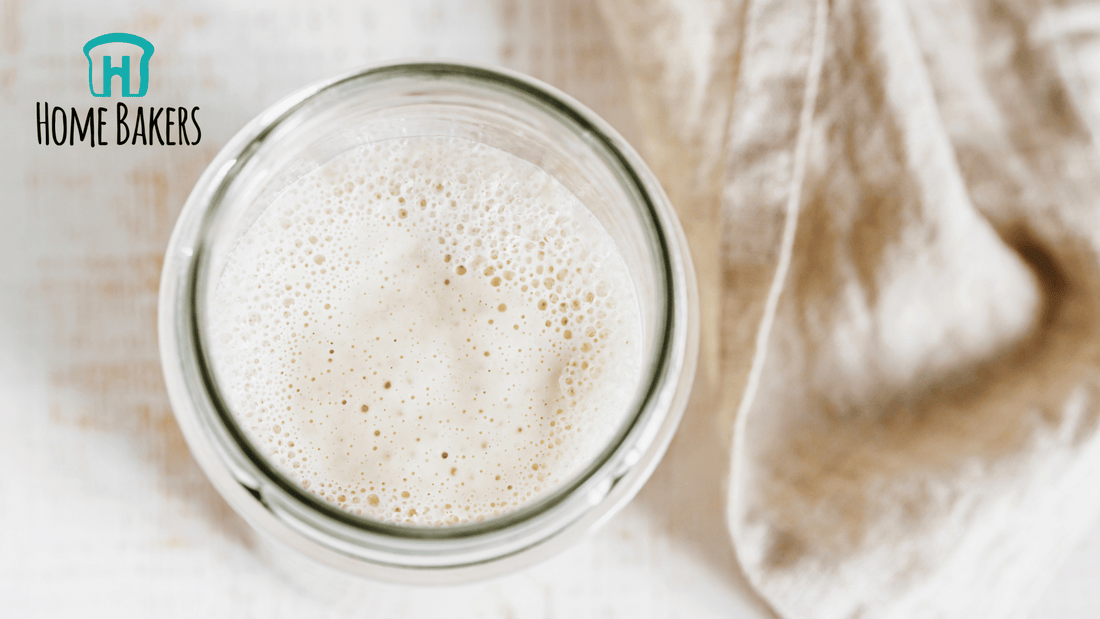
What Is the Best Starter for Sourdough?
Share
Inside this Article:
- Introduction
- What Is a Sourdough Starter?
- Types of Sourdough Starters
- Choosing the Right Flour for Your Starter
- Key Differences Between Liquid, Regular, and Stiff Starters
- How to Start a Sourdough Starter from Scratch
- Best Practices for Maintaining Your Sourdough Starter
- Common Problems and Solutions
- Expert Recommendations
- FAQs About Sourdough Starters
- Conclusion
What Is the Best Starter for Sourdough?
Introduction
Sourdough bread has captivated bakers for centuries with its complex flavors and artisanal appeal. At the heart of every sourdough loaf is the starter—a living culture that brings bread to life. This article explores the different types of sourdough starters, their unique characteristics, and how to choose the best one for your baking needs.
What Is a Sourdough Starter?
A sourdough starter is a symbiotic culture of wild yeast and lactic acid bacteria maintained with regular feedings of flour and water. It serves as the natural leavening agent for sourdough bread, creating the fermentation process that produces rise, flavor, and digestibility.
- Wild yeast: Provides rise by producing carbon dioxide.
- Lactic acid bacteria: Contributes tangy flavors and enhances preservation.
Starters are responsible for developing the unique taste and texture of sourdough bread, making them an indispensable element in the baking process.
Types of Sourdough Starters
Liquid Starter
A liquid sourdough starter is highly hydrated, typically with a water-to-flour ratio of 5:1 (500% hydration).
Advantages:
- Produces a mild, creamy flavor profile due to enhanced lactic acid bacteria activity.
- Ideal for soft breads with a dairy-like taste.
Best for:
- Sandwich loaves
- Milk-enriched bread
Regular Starter
This is the most commonly used starter with a balanced hydration level of 1:1 (100%).
Characteristics:
- Balances yeast and bacteria activity, making it versatile for most bread recipes.
- Produces both vinegary and dairy-like notes depending on maintenance.
Best for:
- Rustic sourdough
- Bagels and baguettes
Stiff Starter (Lievito Madre)
A stiff starter has low hydration, typically 50-60%, resulting in a firmer consistency.
Benefits:
- Promotes extended fermentation and a mellow flavor profile.
- Creates a strong crumb structure and works well with high-fat, enriched doughs.
Best for:
- Panettone
- Brioche and other enriched breads
Choosing the Right Flour for Your Starter
Flour selection significantly influences the activity and flavor of your sourdough starter.
- Whole grain rye flour: Rich in nutrients, it accelerates fermentation and strengthens starter activity.
- White flour: Creates a milder starter; works well for regular feeding once established.
- Organic and unbleached flours: Free from additives that can inhibit microbial growth, ensuring a healthy starter.
Key Differences Between Liquid, Regular, and Stiff Starters
| Starter Type | Hydration | Flavor Profile | Best Uses |
|---|---|---|---|
| Liquid | 500% | Creamy, mild | Soft, sweet breads |
| Regular | 100% | Balanced, versatile | Rustic and everyday loaves |
| Stiff | 50-60% | Mellow, low acidity | Enriched, festive breads |
How to Start a Sourdough Starter from Scratch
Starting a sourdough culture at home requires just flour, water, and patience. Here’s how to do it:
Day 1: Combine Flour and Water
Mix 1 cup whole wheat flour with ½ cup water in a glass jar. Stir until smooth. Cover loosely with a breathable cloth or lid. Let it sit in a warm spot (around 75°F/24°C) for 24 hours.
Day 2: Look for Activity
Stir the mixture to incorporate air. Check for small bubbles, indicating fermentation has started. If bubbles are visible, proceed to feeding. If not, allow another 24 hours.
Days 3-7: Feed and Discard
Discard half of the starter and add ½ cup flour and ¼ cup water. Mix thoroughly, scrape down the sides, and cover again. Repeat this process daily until the starter is bubbly, doubles in size after feeding, and passes the float test (a dollop floats in water).
Troubleshooting
- No bubbles by Day 3: Try adding a tablespoon of rye flour to boost fermentation.
- Bad smell (like gym socks): Stir in and feed as usual. The smell will improve with regular feedings.
Best Practices for Maintaining Your Sourdough Starter
Feeding Schedule
Regular feeding keeps your starter active and healthy:
- Twice daily: Ideal for frequent bakers, using a 1:5:5 ratio (starter:flour:water).
- Once daily: Suitable for occasional bakers; adjust carryover amounts to avoid over-acidity.
Discard Management
Discarding starter prevents overgrowth and maintains balance. Creative ways to use discard include:
- Pancakes
- Muffins
- Crackers
Storage Tips
- Short-term: Refrigerate for up to a week; feed once before baking.
- Long-term: Dehydrate or freeze starter for extended preservation.
Common Problems and Solutions
- Vinegary smell: Indicates excessive acetic acid; reduce oxygen exposure or adjust feeding intervals.
- Inactive starter: Warm the environment or switch to nutrient-rich flour like rye.
- Neglected starter: Perform multiple feedings over 1-2 days to revive.
Expert Recommendations
- Starter size: Keep a smaller starter to reduce waste.
- Experimentation: Try unique starters like chocolate or potato flake for creative bakes.
- Professional insights: Use a stiff starter for consistent results in enriched doughs.
FAQs About Sourdough Starters
- Can I switch flours mid-process? Yes, but allow time for the starter to adjust.
- What is the best starter for beginners? A regular starter is the easiest to maintain and versatile for most recipes.
- How do hydration levels affect my bread? Higher hydration yields softer textures, while lower hydration enhances structure.
Conclusion
Sourdough starters are the heart of artisanal bread, with each type offering unique benefits. By understanding their characteristics and proper maintenance, you can unlock the full potential of sourdough baking. Experiment, explore, and enjoy the journey of creating your perfect starter.
